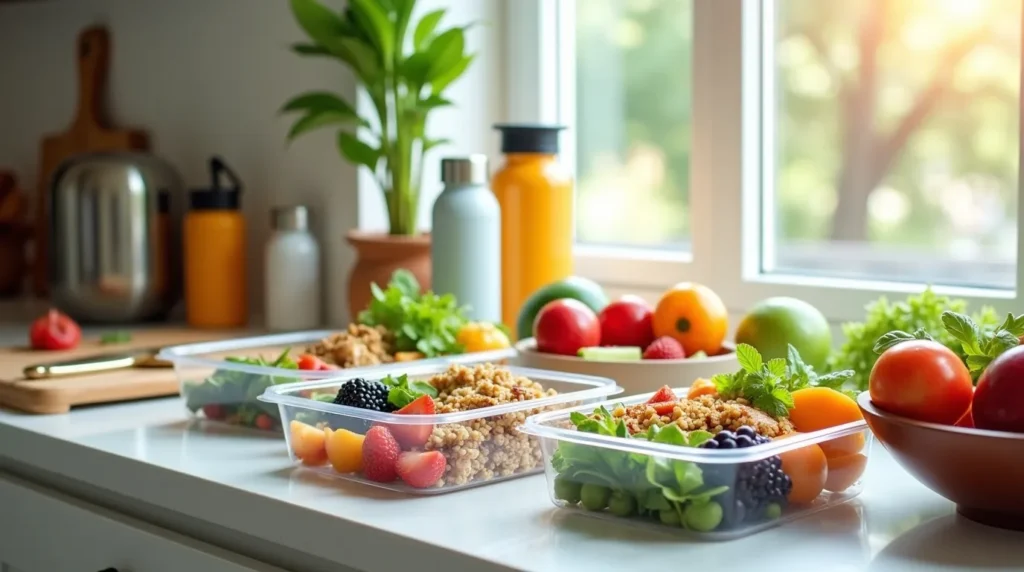Meal Prep for a Healthy Week
Eating healthy doesn’t have to be time-consuming or stressful. With a bit of planning and organization, meal prepping can make your week easier, healthier, and more budget-friendly.
Meal prep helps you take control of what you eat, avoid last-minute takeout, and stay consistent with your nutrition goals. Whether you’re a busy professional, a student, or a parent, dedicating just a few hours each week can save time, money, and stress — while keeping your meals wholesome and delicious.
Here’s a step-by-step guide to help you meal prep efficiently and set yourself up for a healthy, hassle-free week.
1. Plan Your Meals Ahead
Start by creating a weekly meal plan.
- Decide your meals: Breakfast, lunch, dinner, and snacks.
- Balance your nutrition: Include proteins, whole grains, healthy fats, and plenty of vegetables.
- Consider variety: Avoid boredom by mixing up ingredients or sauces each week.
Pro Tip: Use Sunday or any free day as your “meal prep day” to plan and cook ahead.
2. Make a Grocery List
Once your meal plan is ready, make a detailed shopping list.
- Organize it by categories — produce, proteins, grains, dairy, and pantry items.
- Stick to your list to avoid impulse buys.
- Choose fresh, seasonal ingredients for maximum flavor and nutrition.
Bonus: Shopping with a list saves both time and money.
3. Prep Ingredients in Advance
Before you start cooking, wash, chop, and store ingredients.
- Chop vegetables and fruits for quick access.
- Marinate meats or tofu to infuse flavor.
- Cook grains like rice, quinoa, or pasta in bulk.
Pro Tip: Store prepped ingredients in airtight containers or glass jars to maintain freshness.
4. Cook in Batches
Batch cooking saves effort during the week.
- Roast a tray of veggies for multiple meals.
- Cook proteins like chicken, lentils, or beans in large portions.
- Make sauces, dressings, or soups that can be refrigerated or frozen.
Tip: Choose versatile ingredients that can be mixed and matched into different dishes.
5. Use the Right Containers
Invest in quality storage containers for safe, organized meal prep.
- Use glass containers or BPA-free plastic ones.
- Label each container with the meal name and date.
- Stack them neatly in your fridge for easy access.
Bonus: Use portioned containers to help with calorie control and balanced nutrition.
6. Store Smartly
Storing food correctly keeps it fresh longer.
- Refrigerate: Meals you plan to eat within 3–4 days.
- Freeze: Meals for later in the week.
- Separate sauces: Keep dressings or sauces in small containers to prevent sogginess.
Tip: Let food cool before sealing to avoid condensation and spoilage.
7. Keep It Simple but Flavorful
Healthy meal prep doesn’t have to be bland.
- Experiment with herbs, spices, and marinades.
- Prepare dressings or sauces like hummus, pesto, or vinaigrettes.
- Try global flavors to keep meals exciting — Mediterranean, Asian, or Mexican-inspired bowls.
8. Pack Snacks and Hydration
Don’t forget small bites to keep you energized between meals.
- Pack nuts, yogurt, fruit, or energy bars.
- Fill reusable bottles with infused water or herbal teas.
Having healthy snacks ready prevents unhealthy impulse eating.
9. Review and Adjust Weekly
Each week, reflect on what worked and what didn’t.
- Were portions right?
- Did you enjoy the meals?
- Was storage efficient?
This helps you fine-tune your meal prep routine for long-term success.
Final Thoughts
Meal prepping is one of the most effective ways to stay healthy, save time, and eat mindfully. It may feel overwhelming at first, but once you find your rhythm, it becomes a simple and enjoyable habit.
Start small — even prepping two or three meals a week makes a difference. With planning, consistency, and creativity, you’ll enjoy nutritious, home-cooked meals all week long without the daily stress of cooking.


